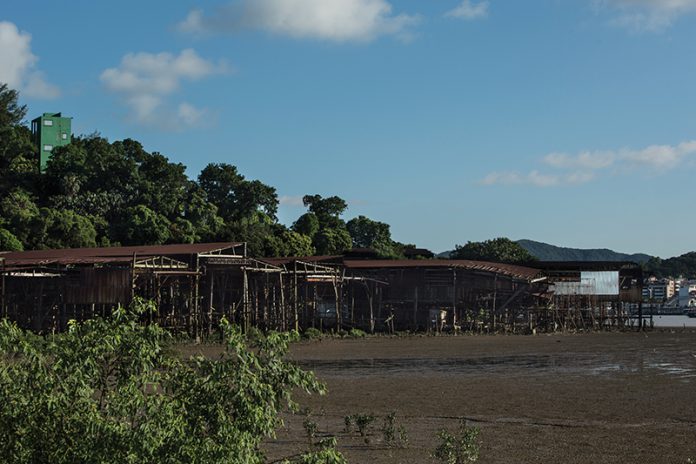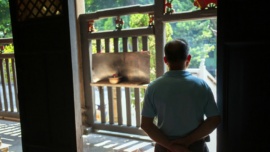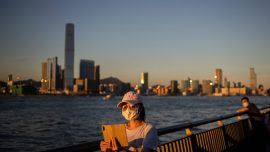Lai Chi Vun shipyards
The shipyards are part of the historic landscape of Lai Chi Vun, an area bridging the centre of Coloane Village and Concordia Park.
In recent decades, however, the abandoned shipyards have fallen into disrepair. The government presented its Coloane Old Urban Area Lai Chi Vun Planning Research in 2012 but little or nothing happened until the government announced last year that the shipyards located in 11 of the 18 land plots would be demolished ‘due to the risk of collapse created by their advanced deterioration.’
Pressured by public opinion, the government decided to promote the recovery of other lots in the same place by creating a provisional protection zone within the scope of the heritage classification procedure of the shipyards.
A public consultation on the subject this year highlighted doubts about the extension of the proposed protection zone and the need to expand the scope of the plan.
Coloane Pier
Two years ago, the city’s Marine and Water Bureau announced regulations for yachts travelling to the MSAR under the future Free Yacht Travel Scheme for berthing at Coloane Pier.
According to the Official Gazette, yachts from Guangdong travelling under the Macau-Guangdong Free Yacht Travel Scheme may only stay in the berthing area in Coloane, fronting Concordia Industrial Park, for a maximum of 14 days. In addition, they cannot berth at local docks for longer than six months per 12-month term.
Chinese Premier Li Keqiang said during his 2016 visit to the MSAR that the Free Yacht Travel Scheme should be implemented by the first half of 2017, but the tender for managing and operating the yacht berth in Coloane was only launched in February.
Coloane Pier will also gain momentum as leisure cruise tours, which will connect the Macau Peninsula to Taipa and the Peninsula to Coloane, begin to operate. MGTO is still discussing the location of the port in the Peninsula, saying more details should be revealed this year.
 Stilts
Stilts
The old tradition of houses on stilts deserves to be preserved and even renovated as a tourist attraction as they are an integral part of Coloane’s cultural memory. They are very popular, for example, with tourists exploring the Coloane Heritage Walk.
Two years ago, a local government official proposed the transformation of Coloane’s empty stilt houses into cultural and creative products stores in order to promote tourism.
At that time it was known that there are about 20 stilt houses in the area near Coloane Ferry Pier, most of which remain empty.
“The remaining stilt houses are either restaurants or dried food shops. There are not many [shopping] choices for tourists [in the area],” Islands Community Services Consultative Committee member Ku Man Tai said, adding that the government should consider allowing residents to operate hostels in some of Coloane’s village houses.
“We are going to invite world experts on this type of construction to study how best to turn them into a true tourist attraction. We want to maintain their original appearance but at the same time introduce a new design concept to make them look more attractive,” MGTO Director Helena Fernandes said, suggesting, too, an idea to transform the stilt complex into a museum of dragon boats.
Cycling track
The Civic and Municipal Affairs Bureau (IACM) is planning to build several cycling tracks on the western waterfront of COTAI to connect them to the one near the Lotus Flower Bridge, with the objective of forming a cycling track from the northwest of Taipa to the northwest of Coloane.
Once all the segments and the Lotus Flower Bridge segment have been connected the whole project will form a 6-kilometre long cycling track ending near Lai Chi Vun Village.
Work is expected to start next year and could cost MOP18 million.
Karting track noise
When the karting track was built in 1996 there were no 60,000 residents in Seac Pai Van.
Today, it is these residents who complain about the noise of the only permanent track available in Macau or Hong Kong, resulting in the intervention of the Macau Environmental Protection Bureau with the aim of reducing noise.
The hours of operation have subsequently been reduced, quieter karts have been put into operation and acoustic barriers installed.
Although the noise apparently continues to bother some locals.
























